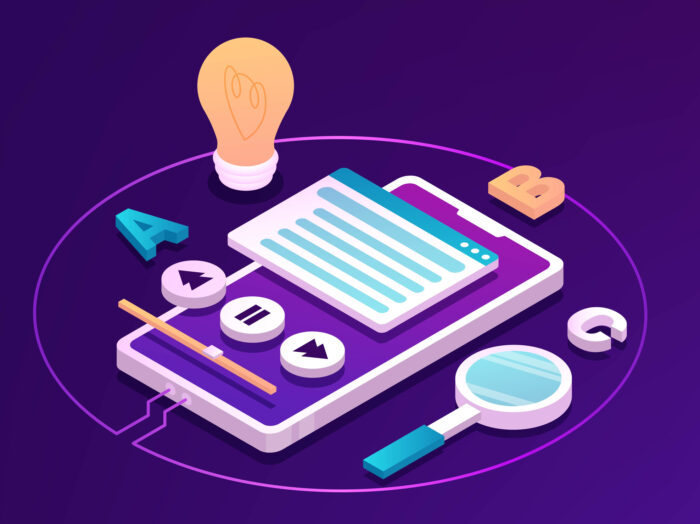Blended learning is an educational approach that combines online and in-person instruction to create a flexible and personalised learning experience. It allows learners to study at their own pace and in their own way, while also providing them with the opportunity to interact with trainers and peers face-to-face.
Whether you’re an academic, a business owner overseeing employee training, or simply keen to understand this educational approach, our guide is designed to bring you up to speed.
Who Invented Blended Learning?
Blended learning wasn’t invented by a single person, but rather evolved over time due to changes in technology and teaching methods.
In the late 1990s, computers began to be used in classrooms. Teachers adopted educational software along with their regular teaching to help students learn better. As the internet became commonplace, online learning materials made it easier to combine classroom teaching with web-based tools.
Around the same time, there was a shift in thinking about teaching, with a focus on making learning more tailored to individual students. Online learning was a perfect fit for this because it could be easily adapted to meet different needs.
In recent years, the rise of smartphones and improved internet access have further accelerated the merging of digital and classroom learning. Now, blended learning is something that’s been widely adopted, as much in the workplace as the classroom.
How Does Blended Learning Work?
Blended learning combines online and in-person instruction, giving learners control over the time, place, path, or pace of their learning.
Here are some of the key ways it works:
- Participants receive real-world instruction, while also using online resources. This allows them to work at their own pace and on their own schedule for part of the time.
- The online and in-person portions of the curriculum are integrated and connected.
- Instructors actively design and develop the curriculum, combining online and in-person elements. They provide instruction, support, and guidance in both spheres.
- Participants have some element of control over their learning path, often through a choice of assignments/modules that allow them to focus on their interests or needs.
- Physical class time focuses more on hands-on activities, projects, collaboration, and one-on-one guidance than lectures. The online portion focuses more on self-paced learning.
- Data and analytics from the online portion help instructors identify individual needs and personalise in-person instruction and support.
Blended Learning Models
Blended learning can be implemented in a variety of ways, depending on your educational goals, the nature of the subject matter, and the resources available.
Some commonly used models include:
Rotation Model
In the rotation learning model, participants switch between online lessons and in-person sessions on a set schedule. This approach combines the best parts of both types of learning.
To give you an idea of how it works, participants might spend one day in a training room. The next day, they could work online to practise what they’ve learned. This rotation schedule can be adjusted to fit the subject and the needs of the participants. For instance, more first-person time could be allocated for subjects that require practical application, such as software training or team-building exercises.
Flex Model
In the flexible learning model, participants have greater autonomy over their learning speed. They can choose to progress through online modules at a pace that suits them, with the option of attending in-person workshops for further guidance. This model is particularly effective for employees who are self-driven and prefer learning independently.
For practical context, employees might be allocated a week to finish an online module. They have the freedom to either complete it in one session or distribute the workload over several days. Additionally, attending in-person workshops remains an option for those seeking facilitator assistance or collaboration on team projects
A La Carte Model
In the a la carte learning model, participants select online courses that complement their in-person training programmes. This affords employees the opportunity to tailor their professional development and enrol in courses unavailable through their workplace’s standard training offerings. The model is particularly beneficial for those keen on diversifying their skill sets or accelerating their career progression.
As an example, under this model, an employee might opt for an online course in data analytics or project management. These chosen courses can either supplement the employee’s standard training or serve to meet specific professional development criteria.
Enriched Virtual Model
In the enriched virtual learning model, the majority of instruction is delivered online, but attendance at certain in-person workshops is mandatory. This format is frequently adopted for training areas that demand practical application, such as software development or compliance procedures. Additionally, it’s applicable for courses led by specialists who are geographically distant from the corporate headquarters.
To illustrate, employees enrolled in an enriched virtual cybersecurity training programme would access lectures, demonstrations, and tasks online. A requisite element would be their periodic attendance at in-person workshops or simulation exercises. This ensures they receive a comprehensive training experience that integrates both virtual and hands-on learning.
What Are the Benefits of Blended Learning?
Blended learning offers genuine advantages for both employees and trainers within a corporate setting.
Here are some key benefits:
Flexibility: Employees can engage in training when it suits them, making this model ideal for those with busy work schedules or those who are more productive at specific times.
Personalisation: Trainers can tailor the learning experience to meet individual employee needs. Online platforms can serve as supplemental resources for extra practice or for delving into more advanced material.
Engagement: Providing a mix of online and in-person activities maintains employee interest and engagement. It also encourages more active participation in workshops or training sessions, as employees can prepare in advance through online materials.
Resource Efficiency: Adopting a blended approach can lead to cost savings and a more streamlined use of space and materials. It reduces the need for dedicated training rooms and resources.
Improved Monitoring: Many blended learning systems come with built-in assessment tools, allowing trainers to closely track employee progress and provide timely feedback.
Blended Learning Examples
So, how is blended learning used in the real world?
Here are a few examples:
NHS Training
The National Health Service (NHS) often uses a blended learning approach to train its staff. For example, NHS employees may take online courses to learn about new procedures and protocols, and then attend in-person training sessions to practise these skills in a simulated environment. This blended learning approach helps to ensure that NHS staff are well-trained and prepared to provide high-quality care to patients.
Apprenticeships
Apprenticeships in the UK often incorporate blended learning into their training programs. Apprentices may take online courses to learn about the theoretical aspects of their trade, while spending the majority of their time gaining practical experience on the job.
Employee Training in the Work
Corporate environments, particularly in the technology sector, often use blended learning for employee training. For example, a company might use Salesforce’s online tutorials and webinars to train its sales and marketing teams in customer relationship management (CRM) software. To supplement this online learning, in-person workshops are arranged where employees can engage in role-play scenarios, mimicking real-life customer interactions.
How To Create a Blended Learning Program
To implement blended learning in your organisation, follow these steps:
1. Set clear goals and objectives
What knowledge and skills do you want your employees to gain from the program? This will guide your design and selection of content and activities.
2. Identify your target audience
Consider your employees’ level of experience, technical proficiency, and learning preferences. This will help you tailor the program to their needs.
3. Choose a blended learning model
There are many different models to choose from, such as rotation, flex, à la carte, and enriched virtual. Each model has its own advantages and disadvantages. Select the model that best aligns with your employees’ needs and your training objectives.
4. Develop your training curriculum
Outline the topics that will be covered in each module or unit, and specify the activities and assessments that will be used. Integrate online and in-person elements to take advantage of the benefits of both approaches.
5. Select the right technology tools
The specific technologies you need will depend on your goals, target audience, and budget. Some common tools include learning management systems (LMSs), video conferencing platforms, and online discussion forums.
6. Train facilitators and employees
Both groups should be proficient in using the technology tools and navigating the blended learning environment. Providing this training in advance will help ensure a successful implementation.
7. Evaluate the program regularly
Solicit feedback from both facilitators and employees to make sure the program is meeting its objectives. Make adjustments as needed.
Next Steps
We’re committed to helping organisations harness the full potential of learning. With over 30 years of experience, we started with a goal to use technology to radically improve workplace learning.
So, if you’re looking to implement learning effectively, we have the tools, expertise, and passion to help. To learn more about how Omniplex Guide can support your organisation’s learning goals, please get in touch or book a free product tour.




